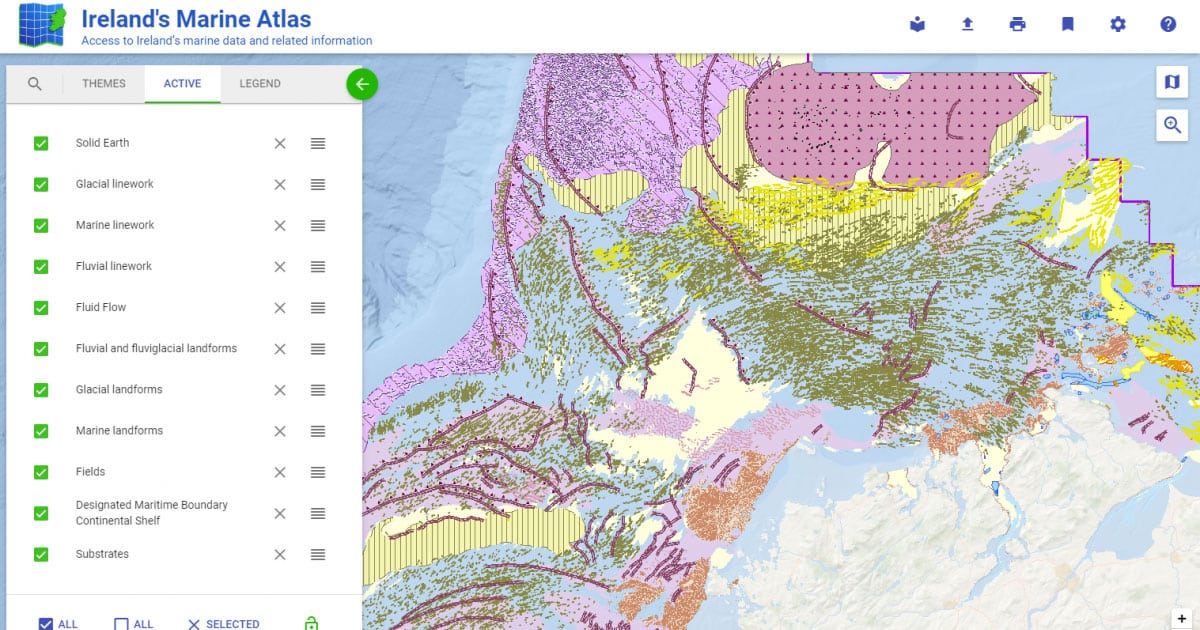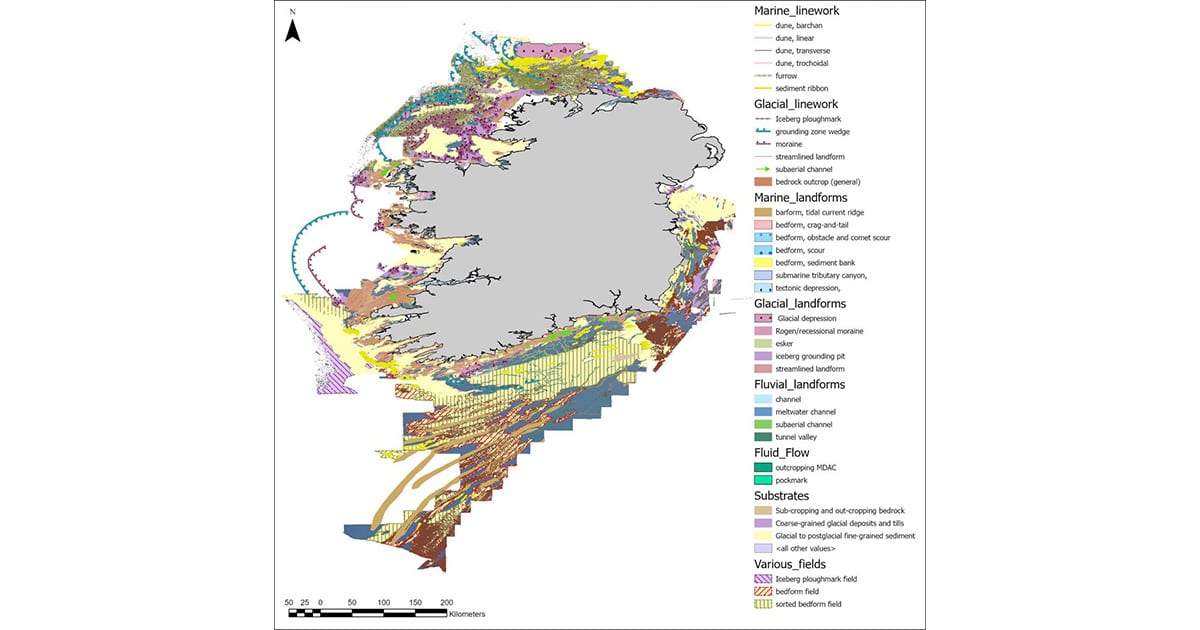Geomorphology is the scientific study of landforms and the processes that shape them.
The project, funded via the Marine Institute research grant scheme, has been developed in collaboration with the Marine Geoscience Research Group in UCC and the Geological Survey Ireland.
Through the Department of Environment, Climate and Communications funded Irish National Seabed Survey (INSS 2003–2006) and INFOMAR programs (2006–2026) over 90% of the seafloor within Ireland’s designated and extended continental shelf area, which is in excess of 714,000 km², has been surveyed in high resolution by Geological Survey Ireland and Marine Institute. This extensive dataset has enabled numerous research groups to delve into the transformative forces that have shaped our ocean seabed over time, including glaciations, sea level changes, currents and tides.
The combination of high quality data, the application of advanced semi-automated mapping techniques and the recent development of international classification standards has offered the opportunity to create the most detailed and comprehensive geomorphological map of the Irish continental shelf to date. The classification of all seabed features has undergone rigorous validation, drawing from an extensive body of scientific literature spanning the past three decades. By applying a consistent approach nationally, the map provides a unique resource to inform on a range of pressing issues within the marine environment.
 (Image credit: The Marine Institute)
(Image credit: The Marine Institute)
A Unique Resource for Ireland
Seabed mapping plays a pivotal role in addressing future challenges for the development and protection of the Irish offshore region.
While bathymetry data (e.g., water depth) alone provide a fundamental metric for many applications, geoscientists can add significant value by providing further data, analysis, and knowledge to better characterize the seabed.
This new geomorphology map is a prime example of how to transform scientific data into an important digital reference for policymakers, marine industries (e.g., offshore renewables, fisheries and aquaculture) and future marine scientists. Marine spatial planning and resource management decisions will continue to be informed by the increasing range of digital products produced by the Marine Institute and partners.
Examples of practical application of geomorphology include decision support for the optimal placement of new offshore infrastructure, decommissioning of existing structures with considerations for their potential impacts on marine ecosystems, identification of constraints related to potential offshore carbon capture and storage (CCS), designation of future marine protected areas and the development of more accurate models for coastal change and resilience.
The Mapping effort
The primary results of this initiative comprise ten GIS layers that not only show the extent and location of thousands of seabed features but also detail the geological characteristics and environmental conditions responsible for their formation.
These data are now freely accessible and integrated into the Irish Marine Atlas under the Geology theme.
The Irish Marine Atlas, developed and maintained by the Marine Institute with funding from the Department of Housing, Local Government, and Heritage serves as a comprehensive resource for viewing and downloading marine environmental data relevant to Ireland’s reporting obligations under the Marine Strategy Framework Directive (MSFD).
A full description of the geomorphology mapping methodologies, the classification scheme and the outputs are available here.
A scientific peer reviewed article describing the mapping process and outcome has also been published in the Journal of Maps and is available here.

